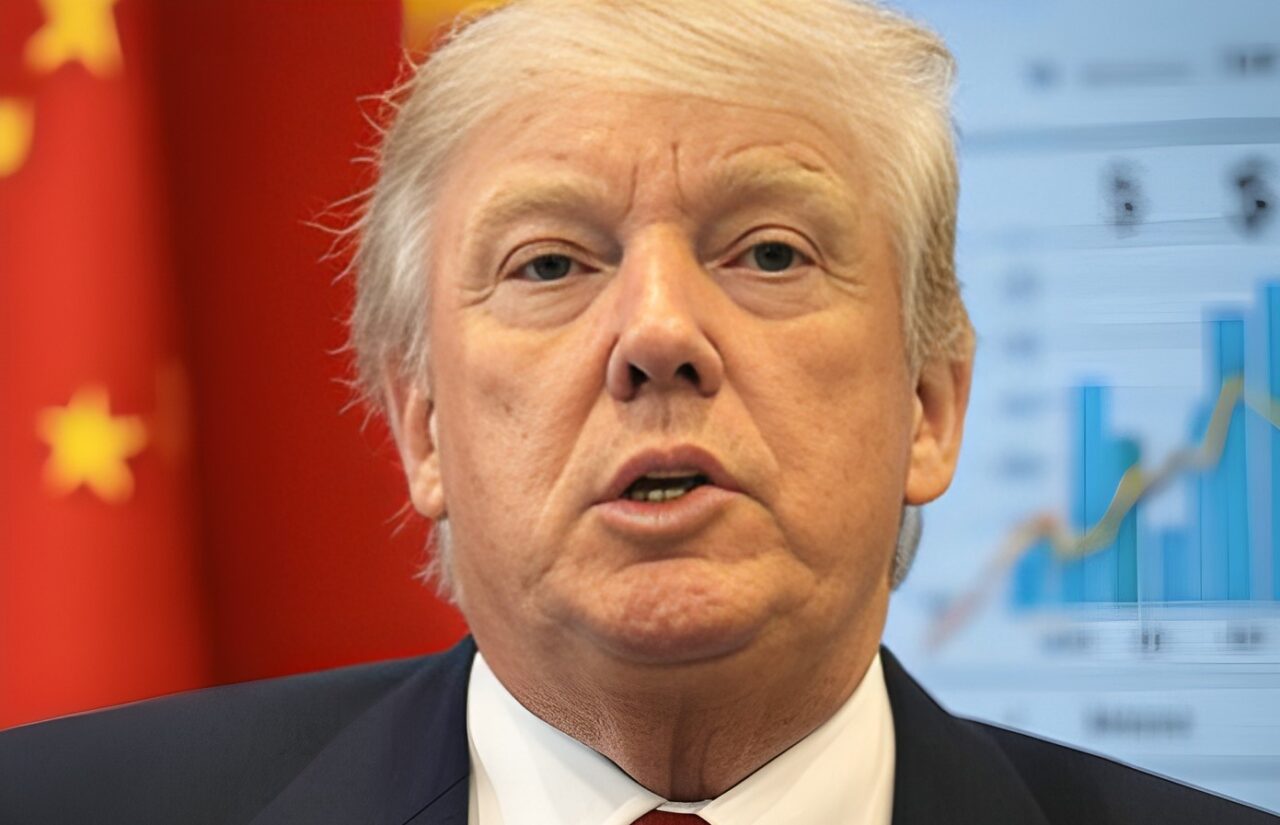
Donald Trump Threatens 50% Tariffs on China in Escalating Trade War, Markets Brace for Impact
In a bold move that has sent shockwaves through global markets, U.S. President Donald Trump announced on Monday that the United States will impose an additional 50% tariff on Chinese goods if China does not withdraw its recently enacted 34% retaliatory tariffs by April 8, 2025. The statement, posted on Truth Social and shared via the @TrumpDailyPosts X account at 15:15 UTC, marks a significant escalation in the ongoing U.S.-China trade war, which has already rattled investors and fueled fears of a looming recession.
A Tit-for-Tat Trade Standoff
The announcement comes in response to China’s decision on April 6, 2025, to impose a 34% tariff on U.S. goods, a move Beijing described as a countermeasure to what it calls “U.S. bullying” in trade practices. Trump’s post accused China of long-standing trade abuses, including “record-setting tariffs, non-monetary tariffs, illegal subsidization of companies, and massive long-term currency manipulation.” He warned that failure to retract the 34% tariff increase by the April 8 deadline would result in the U.S. imposing the additional 50% tariffs, effective April 9, bringing the total tariff rate on Chinese goods to a staggering 104%.
“China played it wrong, they panicked – the one thing they cannot afford to do!” Trump had posted on Truth Social days earlier, following Beijing’s initial retaliation. The new tariffs, if implemented, would align with Trump’s second-term campaign promises of imposing up to 60% tariffs on Chinese imports, a policy that has already contributed to the U.S. trade-weighted average tariff rising to 24% in April 2025—the highest in over a century, according to economic analysts.
Global Markets Reel as Tensions Rise
The escalating trade conflict has sent global stock markets into a tailspin. On April 4, Reuters reported that global stock markets plummeted after China’s announcement of the 34% tariffs, with the Nasdaq Composite entering a bear market and the Dow Jones Industrial Average confirming a correction. The trade war has spurred the largest market losses since the pandemic, with investors increasingly concerned about the potential for a prolonged economic downturn.
Trump’s latest threat has only heightened these fears. The proposed 50% tariff increase would affect more than $380 billion worth of Chinese goods, adding an estimated $79 billion in taxes based on current trade levels, according to a Tax Foundation report from April 4, 2025. This would mark the largest tax hike since 1982, translating to an average tax increase of more than $1,900 per U.S. household in 2025.
Social Media Reactions: A Divided Response
The announcement quickly became a trending topic on X, with the hashtag “U.S. threatens 50% additional tariff on China” gaining traction. Reactions to Trump’s post were mixed, reflecting the polarized views on his trade policies. Supporters rallied behind the president, with users like @FLPatriot calling him the “GOAT” (Greatest of All Time) and @RickD_GK urging him to “show them not to FAFO, Boss.” Others, like @BrittanyRae, celebrated the move with a meme featuring Trump and the caption “Commies get rekt.”
However, critics were quick to express concern. @JudgeJeaninne shared a chaotic image of a man holding a flaming object in an office, captioned “Dems in Trouble: Bad News Surfaces,” hinting at the broader political and economic fallout. @Cbcbken took a more sarcastic tone, replying, “Ok dad time for pills,” suggesting skepticism about the strategy’s effectiveness.
A History of Trade Tensions
The U.S.-China trade war, which began in January 2018 during Trump’s first term, has been marked by a series of tit-for-tat tariffs and trade barriers. Trump’s initial tariffs targeted Chinese goods to address what the U.S. calls unfair trade practices, including intellectual property theft and forced technology transfers. China retaliated with its own tariffs, and despite a tense phase-one agreement in January 2020, the trade war has been widely characterized as a failure for the U.S., with studies showing little economic benefit to American regions meant to be protected by the tariffs.
A January 2024 study by David Autor and others, cited by the Tax Foundation, found that the 2018–2019 tariffs had “neither a sizable nor significant effect on U.S. employment in regions with newly-protected sectors,” while foreign retaliation, particularly in agriculture, had clear negative impacts. China’s latest 34% tariffs, combined with export controls on rare earths, signal a renewed willingness to push back against U.S. pressure.
Economic and Political Implications
Trump’s hardline stance has drawn both praise and criticism. Supporters argue that the tariffs are a necessary tool to force China to address its trade practices and reduce the U.S.-China trade deficit. “President Trump is showing China that the U.S. won’t back down,” said @RapidResponse47 on X, linking to the official statement. Others, like @CharlieKirk11, framed the move as a justified response to China’s “myriad other trade abuses.”
Critics, however, warn of dire consequences. A prolonged trade war could exacerbate inflationary pressures, disrupt global supply chains, and hurt American consumers and businesses. Federal Reserve Chairman Jerome Powell, speaking on April 4, acknowledged that uncertainty from the trade war has paused business decisions, though he refrained from directly addressing the stock market selloff. Trump, meanwhile, has called on the Fed to cut interest rates, writing on Truth Social, “CUT INTEREST RATES, JEROME, AND STOP PLAYING POLITICS!”
On the political front, the trade war has created rifts within the U.S. Senate. While some, like Senator Ted Cruz, have expressed hope that Trump will use tariffs as leverage to lower global trade barriers, others have pushed back. The Senate recently passed legislation to terminate new tariffs on Canada, though Cruz voted in the minority to stand with Trump.
What’s Next?
As the April 8 deadline looms, all eyes are on Beijing’s response. Trump’s decision to terminate all talks with China while opening negotiations with other countries signals a broader shift in U.S. trade strategy. However, the immediate focus remains on the potential economic fallout. If the 50% tariffs go into effect on April 9, they could further strain U.S.-China relations and deepen the global economic uncertainty already gripping markets.
For now, Trump remains defiant. From his Mar-a-Lago residence in Florida, where he has been largely out of public view, the president has continued to send messages of confidence via social media. “To the many investors coming into the United States and investing massive amounts of money, my policies will never change. This is a great time to get rich, richer than ever before!!!” he posted on April 4.
Whether this gamble pays off—or plunges the global economy into further chaos—remains to be seen. As @SwerveMetaX commented on X, Trump is certainly “keeping the pot stirred.” The world now waits to see how hot the trade war will get.
